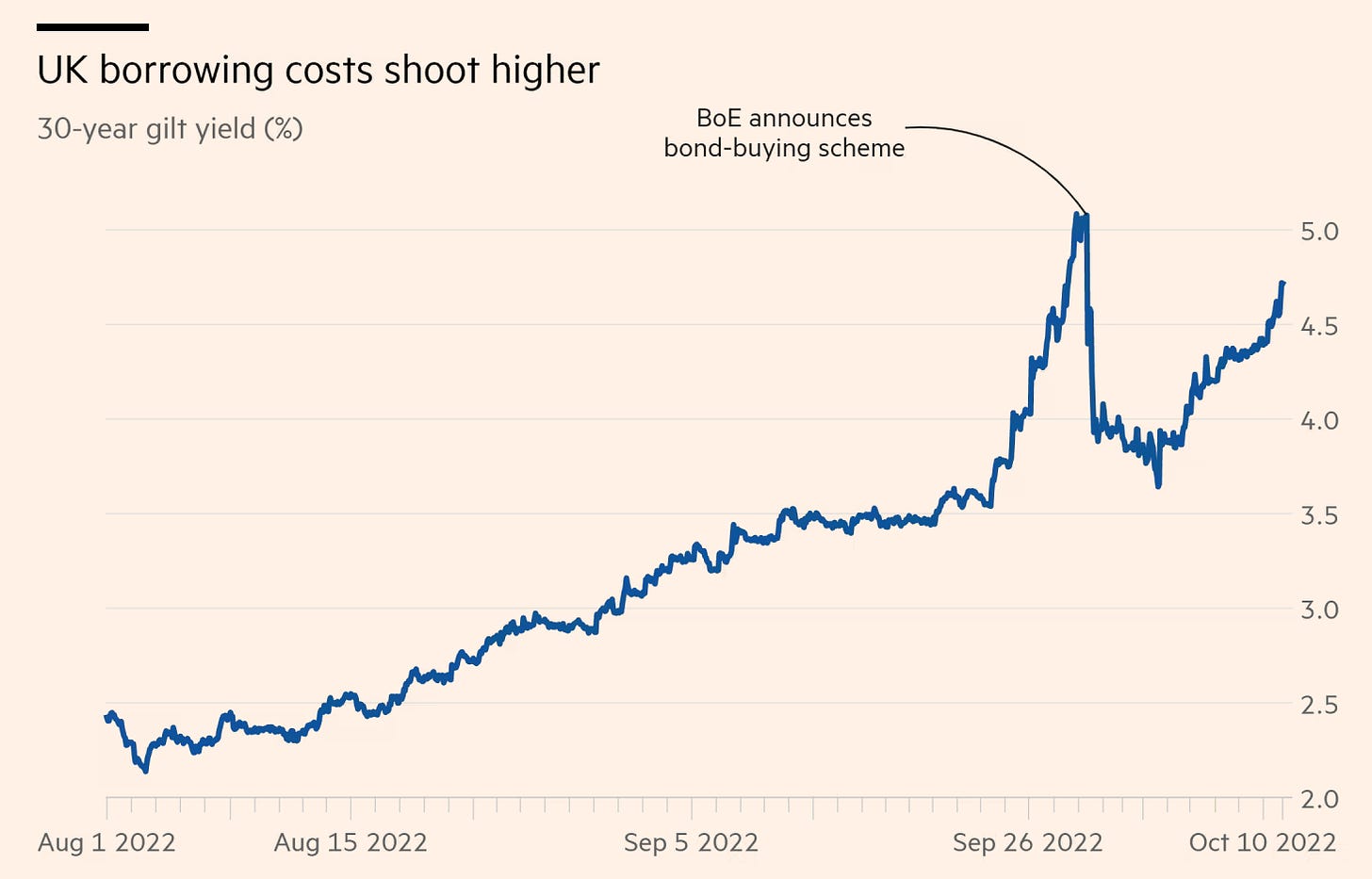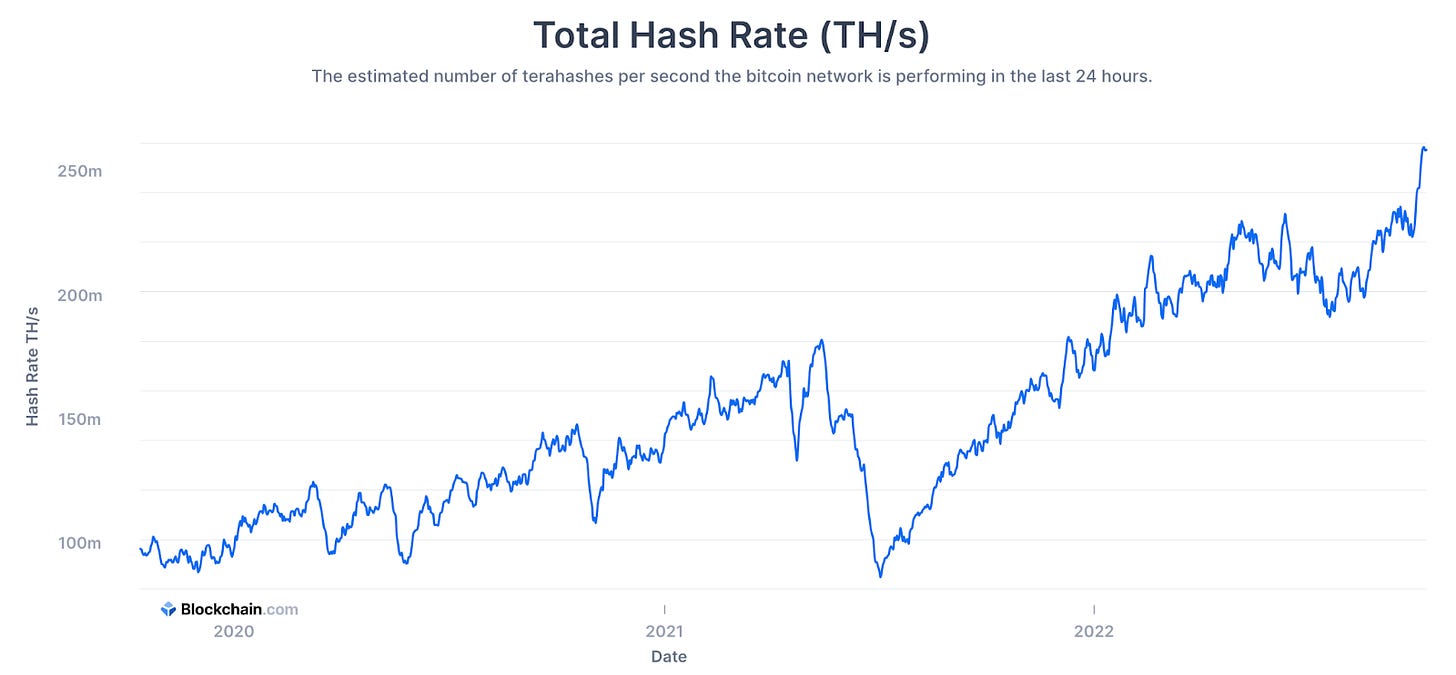4%
Increasingly, 4% seems to be the magic number. When US 10 year yields hit that level, the system wobbles. Various collapses attest to that, first in Sri Lanka and most recently in the UK.
US debt now sits at $31 trillion. At 4% interest their annual repayments would be $1.2 trillion, 50% more than they spend on defence. The vast majority of US debt matures before 2027 so this is a real issue.
It would completely devour the US as the debt and interest burden continue to grow together. The maths are really simple on that score and the market knows it.

There is a reason bonds are having their worst year ever. It’s not absolutely obvious why it shouldn’t continue either.
The intervention of the Federal Reserve in the bond market once again is a matter of time. It will be at a massive scale. It might take a month to happen, it might take a year but it won’t take a decade.
Panic on the streets of London

On the 29th of September, the Bank of England and their arrogant, entitled Governor had scheduled a press conference to discuss their plans to introduce Quantitative Tightening. The warbling imbecile that is Andrew Bailey would have had his speech ready. I imagine embarking on ‘tough times ahead’ while admonishing people for asking for pay rises which would only make matters worse. “We must act to control the inflation dragon and reducing our bond holdings is absolutely what we must do for the good of everyone”.
As we know, that is not what happened. The sky fell in shortly before the press conference (which was cancelled and removed from the archives) and the Bank responded by buying bonds in the open market. Except it wasn’t QE this time, it was emergency measures to stabilise the market.
This week matters got worse. The Bank announced a “temporary expanded collateral repo facility”. It’s so euphemistic its stupid, nobody would approve it being called that in these circumstances unless they were Andrew Bailey (did I mention he’s a moron who should be sacked?). It failed and following their success last week, bond yields immediately spiked on the news, taking us back almost to where we were.

Not content with the partial failure of this policy, Bailey then doubled down on Tuesday telling pension funds they had three days to get their house in order.

That itself has induced panic and will concentrate selling into the next three days which will make matters much worse and will cause losses much much larger than they needed to be. Irrespective of whether you agree with the intervention or not, the way to manage it is surely soothing words. Everything will be fine, specifically don’t panic. He’s managed to do the opposite to the cost of tens of millions of pensions across the UK.
It’s hard to emphasise just how unprecedented this is. 30 year bond yields just do not go from 2.1% to 5% in the space of 56 days. Even with the intervention of the Bank the pain the pension funds are feeling is enormous and it probably won’t be fully revealed until early next year but I suggest it will be ugly.
That pain of this is being felt in Australia too with less-than-leading fund manager Magellan experiencing over $3 billion in outflows to UK institutions at the end of September, which will probably increase this week. There’s a lot of blood somewhere in London, we just don’t know where yet.
Bitcoin mining
The bitcoin mining hash rate continues to surprise, it jumped on Wednesday by 13%. Hash refers to the number of calculations the network is doing per second to mine bitcoin, that itself is driven by the amount of mining equipment deployed.
Put in context, the increase over the most recent two week period is like the addition of over 5 billion laptops or adding the equivalent of the entire bitcoin mining industry in mid-2018.
The scale of infrastructure deployment is absolutely extraordinary.

There are several possible explanations. The end of the American summer would be contributing with the Texas miners now fully back online with temperatures in the state dropping. More interesting theories for a leap this large include a new generation of mining equipment and state-sponsored mining. Mining was legalised in Iran recently but the country with the most stranded power and biggest incentive is likely Russia.
Is it possible we have entered the state-sponsored mining phase? It was always going to happen because a lot of countries have access to enormous power resources but much less access to financial markets. It may be years before we know for sure but a leap in mining hash this large is not trivial at all.
One from the archives

It was July 19th 2021. Hamish Douglass of Magellan Asset Management was on hand to tell the world bitcoin was about to go to zero. “It’s almost like a religion” he said, without a hint of irony given the personality cult he had developed at the firm.
“Mr Douglass was not overly concerned about such asset price bubbles as far as Magellan’s investment performance was concerned, as it had zero exposure.”
Splendid, good to hear.
Bitcoin was A$40,000 on that day, it has had a terrible time since, now A$30,500. Down 23%.
Magellan, with its zero exposure, had a stock price of $54. You can pick them up for $10.20 now. Down 81% and under new management.
It’s not all bad though because he’s on a boat somewhere, most likely with your money.
Euro-Trash
An unlikely turn of events in Euroland. The ECB has actually published something helpful. In their push for a digital euro they released an explainer on the difference between central bank money and what they call ‘private money’. It’s rather good, because the vast majority of people don’t know the difference.
Naturally though, the article reserved some ire for cryptocurrency:
In recent years, we have seen many crypto-assets popping up all over the world. These are also known as “cryptocurrencies”. This name is misleading though, as they don’t perform the three functions of money: a reliable medium of exchange, a store of value and a unit of account.
The ECB seems to fail to understand that the best money is emergent. It cannot launch with the three features they are looking for, it has to develop them through its credible monetary policy and usefulness over time. Euros on the other hand are different. They are instantly accepted because if you choose not to accept them, you can go to jail.
That is actually the difference here. Euro’s only work because they are ‘Fiat’ meaning ‘by decree’; without that decree people would absolutely use something else. The Euro will fail and gets less credible with time. Bitcoin might fail too, but it gets more credible with time.
To top off a busy week, the ECB also delivered a working paper:

Please enjoy the explanatory extract.
“We employ loan-level fixed-effects regressions that allow us to effectively disentangle credit supply from credit demand and determine whether banks’ lending choices are really driven by firms’ pollution intensity. To do this, we construct a highly granular dataset by matching loan-level data from the euro area credit register (AnaCredit) with banklevel and firm-level data from various sources, including banks’ corporate governance variables and firms’ greenhouse gas emissions. “
It turns out, more women equals more green. Except in Southern Europe, where it isn’t true at all. Actually, more women equals more green but only really in Germany and Scandinavia, otherwise it doesn’t.
“However, when we turn our attention to the triple interaction term (Board female*GHGTot*South), we can infer that the discussed inverse relationship between more gender-diverse boards and lending toward less polluting firms does not hold for banks located in southern euro area countries.”
On the basis something is not true for half a continent how you conclude it is in fact generally true is beyond me.
The report is written by the same people who wrote that crazy report earlier in the year about gender diversity. You might recall me covering its conclusions which were along the lines of you are likely more green provided you are female, aren’t catholic (they honestly said that), didn’t live in Spain, drove an electric Renault and didn’t have an Uncle called Bob.
